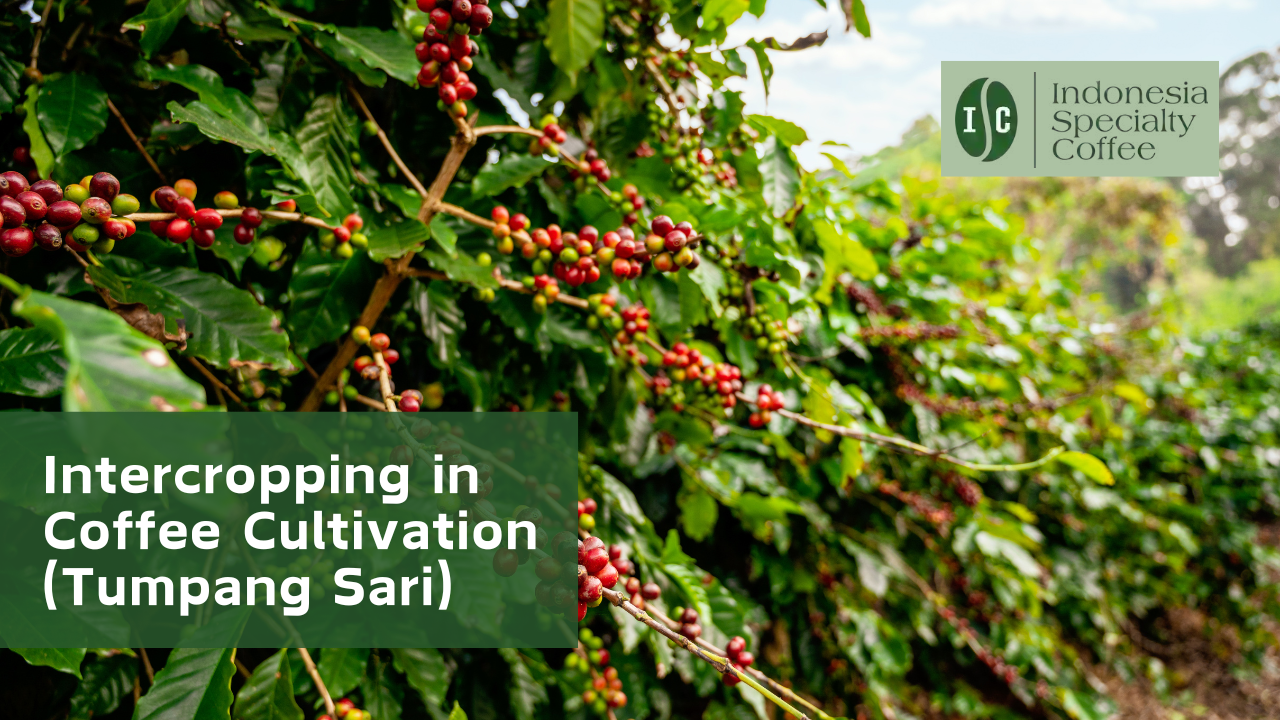Introduction to Intercropping
Indonesia Coffee Plantation has a unique method of planting. The interesting one is this one, Intercropping locally known as Tumpang Sari is a planting method that involves growing multiple types of crops in the same area. This approach not only increases plant diversity but also supports the sustainability of agricultural ecosystems. In coffee cultivation, intercropping can enhance yields and improve soil health. Also, this method of coffee planting is the cause of the unique taste in Indonesian Coffee Beans.
Companion Plants (Intercropping / Tumpang Sari)
Companion plants that are suitable for growing alongside coffee include:
- Fruits:
- Banana: Provides shade and increases soil moisture, creating a more favorable microclimate for coffee plants.
- Avocado: Improves soil structure and provides nutrients, enhancing the overall health of the coffee plants.
- Durian: Offers shade and enhances biodiversity, which can help in pest control and promote a balanced ecosystem.
- Vanilla: A climbing plant that can thrive under the shade of coffee, utilizing vertical space and contributing to the diversity of the farm.
- Vegetables:
- Chili Peppers: Utilizes space between coffee plants and provides additional yields, allowing farmers to maximize their land use.
- Tomatoes: They can be planted in more open areas, yielding quickly and providing a cash crop alongside coffee.
Benefits of Intercropping
- Enhanced Soil Health: The diverse root systems of different plants can improve soil structure and nutrient availability, leading to healthier coffee plants.
- Pest Management: A variety of plants can attract beneficial insects and deter pests, reducing the need for chemical pesticides.
- Microclimate Regulation: Companion plants can create a more stable microclimate, protecting coffee plants from extreme weather conditions and helping to retain soil moisture.
Impact on Coffee Flavor
Interestingly, intercropping can also influence the flavor profile of coffee. The presence of companion plants can affect the soil composition and nutrient availability, which in turn can enhance the complexity and richness of the coffee’s taste. For example:
- Nutrient Synergy: The nutrients released by companion plants can enhance the growth of coffee plants, leading to better bean development and flavor.
- Flavor Absorption: Some studies suggest that the aromatic compounds from certain companion plants may be absorbed by coffee plants, potentially adding unique flavor notes to the coffee.
By integrating companion plants into coffee cultivation, farmers not only increase their yields but also contribute to the overall quality and taste of the coffee produced.
Coffee Planting System: 2 Ways of coffee planting in Indonesia
Conventional Planting System
The conventional Coffee planting system is a traditional method often used in coffee cultivation. In this system, coffee plants are spaced adequately to ensure optimal growth.
- Planting Distance:
- The optimal distance for each coffee plant is 2.5 x 3 meters. This spacing provides enough room for root growth and reduces competition with other plants.
- Advantages:
- Facilitates maintenance and harvesting.
- Reduces the risk of nutrient competition between coffee and other plants.
Fence System (New Planting Method)
The fence system is a new planting method that integrates coffee plants with companion plants in a single planting hole. This method is designed to enhance land and resource use efficiency.
- Planting Method:
- Plant 1 hole with 2 to 3 coffee plants. This allows coffee plants to receive adequate light and space to grow while still benefiting from companion plants.
- Planting Distance:
- The distance between planting holes can be adjusted, but it should maintain sufficient spacing for optimal growth.
- Advantages:
- Increases plant diversity and soil health.
- Reduces reliance on chemical fertilizers and pesticides.
- Efficiently utilizes space and enhances agricultural yields.
Drawbacks of Intercropping
- Nutrient Competition: Nutrients in the soil are divided between coffee and companion plants.
- Photosynthesis Disruption: Large companion plants that are too close can block sunlight needed by coffee plants.
Conclusion
Intercropping in coffee cultivation, whether through the conventional planting system or the fence system, is an effective strategy for enhancing sustainability and agricultural yields. With proper planning and the right choice of companion plants, farmers can maximize the potential of their land.

